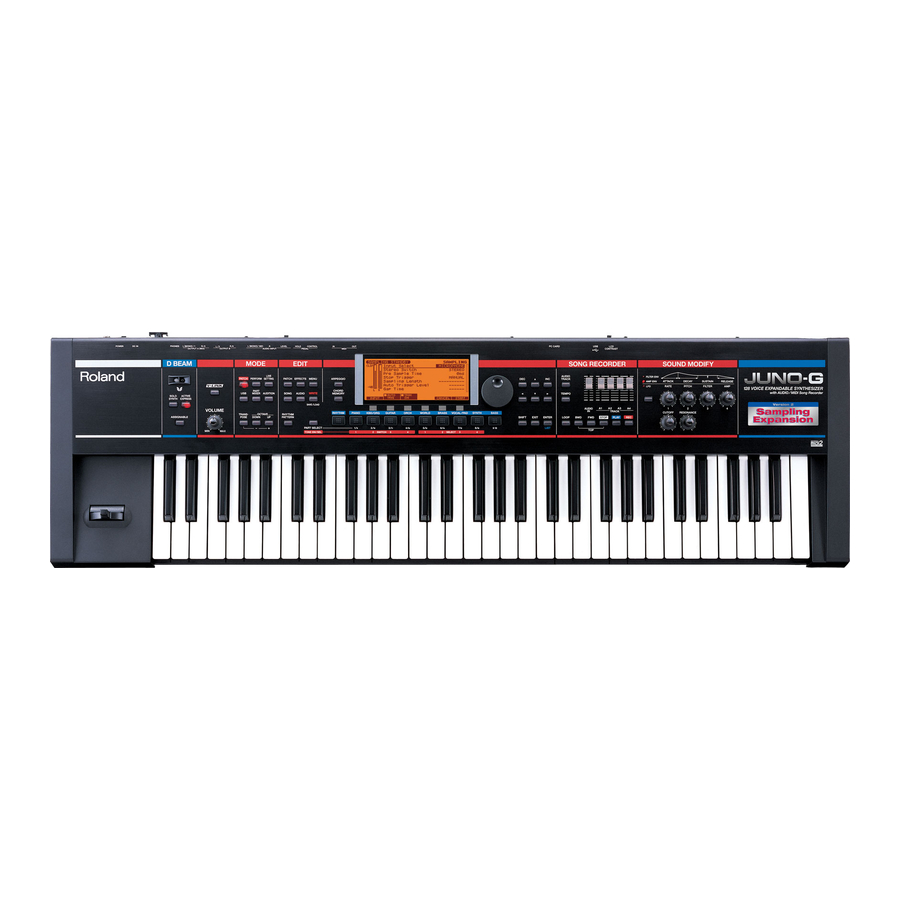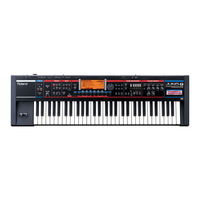
Roland JUNO-G Workstation Keyboard Manuals
Manuals and User Guides for Roland JUNO-G Workstation Keyboard. We have 8 Roland JUNO-G Workstation Keyboard manuals available for free PDF download: Owner's Manual, Service Notes, Product Manual, Workshop Manual, Micro Manual, Quick Start Manual
Roland JUNO-G Owner's Manual (252 pages)
128 voice expandable synthesizer
Brand: Roland
|
Category: Synthesizer
|
Size: 9 MB
Table of Contents
Advertisement
Roland JUNO-G Service Notes (41 pages)
128 Voice Expandable Synthesizer with AUDIO/MIDI Song Recorder
Brand: Roland
|
Category: Synthesizer
|
Size: 8 MB
Table of Contents
Roland JUNO-G Product Manual (28 pages)
JUNO-G recording and creating cd
Brand: Roland
|
Category: Synthesizer
|
Size: 54 MB
Table of Contents
Advertisement
Roland JUNO-G Micro Manual (16 pages)
Brand: Roland
|
Category: Electronic Keyboard
|
Size: 1 MB
Table of Contents
Roland JUNO-G Workshop Manual (21 pages)
Workstation Keyboard - JUNO-Geography
Brand: Roland
|
Category: Musical Instrument
|
Size: 5 MB
Table of Contents
Roland JUNO-G Workshop Manual (13 pages)
Workstation Keyboard - Using the JUNO-G with a Computer
Brand: Roland
|
Category: Musical Instrument
|
Size: 3 MB
Roland JUNO-G Quick Start Manual (2 pages)
Brand: Roland
|
Category: Electronic Keyboard
|
Size: 0 MB
Table of Contents
Roland JUNO-G Quick Start Manual (2 pages)
Brand: Roland
|
Category: Synthesizer
|
Size: 0 MB







